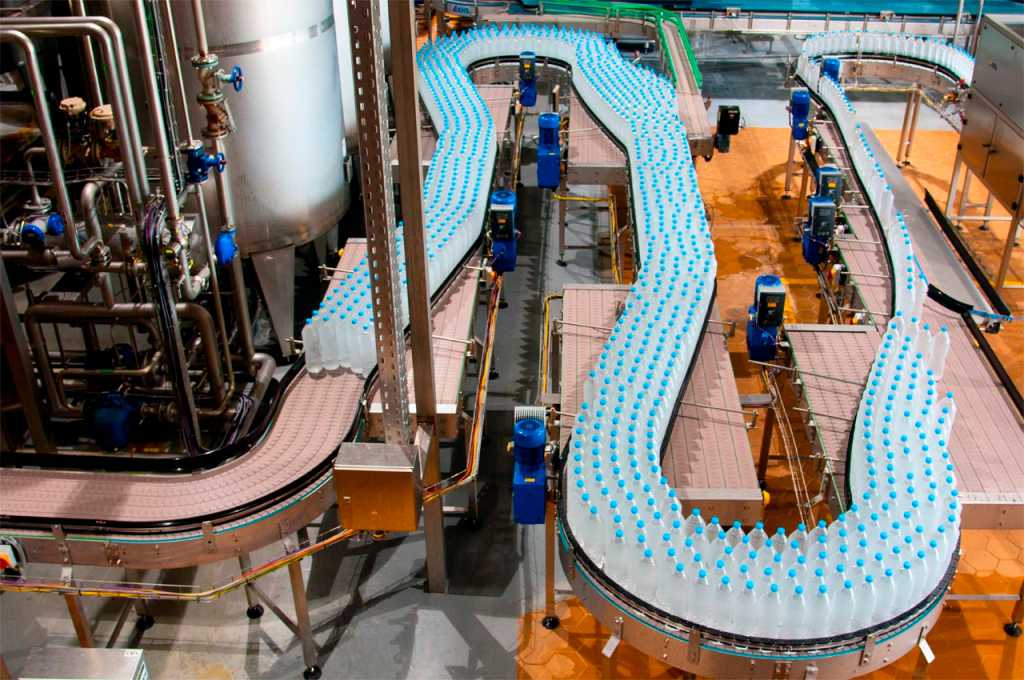In many ways, the manufacturing industry stands on edge—emerging from a pandemic and facing all-time highs in demand yet teetering on inflation-related economic uncertainty and coping with skilled labor shortages. Answering these concerns, smart factories are moving to another edge: edge computing, where operational data from Internet of Things (IoT) sensors can be collected and processed for insights in near-real-time.
Citing an impactful list of benefits, from enhancing production quality and protecting worker safety to filling knowledge gaps and preventing maintenance issues, nearly 70% of manufacturing IT is set to be deployed at the edge within the next two years.[1] To get the most from their investments, factories of the future will need to be driven by data and optimized with artificial intelligence (AI).
For manufacturers, it’s important to understand the advantages and challenges of edge computing and to discover why smart factories are becoming AI-optimized. There’s also an opportunity to explore how new manufacturing technologies can help build a bridge between information technology (IT) and operational technology (OT)teams.
The Lowdown on Edge Computing
As new enterprise IT infrastructure deploys at the edge instead of in corporate data centers, there’s one main trigger for this shift. Data. A lot of it. Streaming in from sensors and other IoT devices installed throughout the factory, most legacy IT infrastructure is not designed to capture and process this volume of data in real-time. An edge computing architecture can begin to help solve these problems.
Here’s how edge computing works: a percentage of storage and compute resources move closer to the source of the data and away from the data center. Previously, raw data was transmitted to the data center and then processed and analyzed there, which could take hours or days to complete. With edge computing, those functions are performed much closer to where the data is created, such as on the factory floor. This allows teams to receive and review business intelligence and make changes in near-real-time rather than waiting hours or days to glean insights from data.[2]
As with any advancement in technology, edge computing comes with benefits and drawbacks. The sheer volume of data available, for instance, prompts heightened expectations for real-time insights. Many innovative manufacturers implementing edge computing have called upon AI to help process data quickly and deliver those insights.
Inside the AI-Optimized Factory
When manufacturers take AI to the edge, the results include an impressive list of benefits from fewer accidents, defects, or breakdowns to a closure of knowledge gaps. Organizations have demonstrated and reported a greater ability to protect workers, enhance production quality, avoid maintenance issues, and fill skills gaps.
To keep workers safe while operating machinery, for example, companies can monitor activities via AI computer vision. The system will raise alerts or otherwise intervene if there is human error or equipment malfunction.
For predictive maintenance, AI can use sensor data to proactively identify problems and save technicians the time it takes to discover or diagnose equipment failures. This type of modern intervention can keep processes and equipment moving at peak performance, avoiding disruptions, and reducing maintenance costs.
Defects cause problems for a company’s brand and bottom line. By using AI computer vision to track the movement of parts throughout the production cycle, any quality issues can be flagged and traced to their origin—whether it’s related to process or components—in real-time.
Specialists are in demand and often reside offsite. But an AI solution that uses augmented reality can take specialists on a virtual visit, enabling them to evaluate a situation and/or be a guide to onsite staff. Some implementations even have AI capabilities for reading a situation and making recommendations when specialists are unavailable.
Dell Technologies customers have reported[3] some of their real-world successes using AI at the manufacturing edge as:
- Reduced data center footprint
- Output increase
- Faster error detection
- Terabytes of data ingested, stored and analyzed per day in near real-time
- Immediate anomaly detection
- Reduced data storage expenditures
When IT and OT Worlds Collide
Introducing new technologies to the manufacturing space also presents an opportunity to bring Informational Technology (IT) and Operational Technology (OT) teams together. Traditionally, IT has been removed from the day-to-day operations of the factory but as technologies become more advanced and integrated into the factory (via IoT sensors, streaming data capture and storage, real-time analytics and AI), there is a need these two teams to work more closely together.
For manufacturers, this means uniting the physical world of machines, devices, and industrial equipment with the digital world of servers, networks, and applications. Each world holds its own distinct sets of data, modes of operation, and teams of skilled staff. [4] Bringing them together would be a force multiplier for enterprise and industrial operations, merging business processes and controls with insights.
When convergence is achieved, manufacturers are able to make decisions backed by holistic understanding and quickly respond to critical concerns. They also see significant gains in areas such as regulatory compliance, process automation and business intelligence.[5]
A Cohesive Edge Strategy
To create and maintain the factories of the future, smart manufacturers are investing in edge technology that meets their specific demands. This starts with a strong foundation of storage, hardware, software and general infrastructure, and security—everything required to support the journey, from ingesting edge data to generating business outcomes.
Many leading manufacturers are partnering with Dell Technologies to simplify deployment, integration, security, and management. They are opting for the configured systems built by manufacturing AI experts and adopting engineering-validated solutions designed for smart manufacturing use cases that do not require onsite AI expertise. The measurable results—better, faster insights at the point of need—provide a competitive advantage for manufacturing organizations of all sizes.
Learn more about solutions for AI at the manufacturing edge by clicking here.
[1] 451 Research sponsored by Dell Technologies, S&P Global Market Intelligence, August 2021
[2] https://www.techtarget.com/searchdatacenter/definition/edge-computing
[3] https://www.delltechnologies.com/asset/en-us/products/ready-solutions/briefs-summaries/ai-edge-manufacturing-ebook.pdf
[4] https://www.techtarget.com/searchitoperations/definition/IT-OT-convergence
[5] https://www.yash.com/blog/benefits-and-challenges-of-it-ot-convergence-in-manufacturing/

